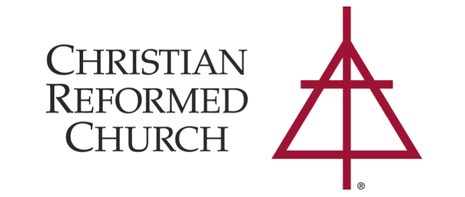Table of Contents
Moths have been a part of the natural world for centuries, and they have also found their way into the pages of the Bible. In the Bible, moths are often used to symbolize a range of concepts, from fragility to destruction, and they offer many important lessons and insights for contemporary readers and believers.
Key Takeaways
- Moths hold significant symbolism in the Bible
- Biblical references to moths are found throughout various narratives and teachings
- Moths represent fragility, destruction, vulnerability, and darkness in biblical contexts
- Their spiritual significance offers many important lessons for contemporary readers and believers
Biblical References to Moths
Moths are mentioned in several important biblical texts, where they are used to symbolize fleetingness, transience, destruction, and weakness of human life. In Job 13:28, Job says, “Man wastes away like something rotten, like a moth-eaten garment.” Psalm 39:11 also uses a similar metaphor: “You discipline people for their sins; you consume their wealth like a moth—surely everyone is but a breath.”
Moths are also referenced in the New Testament, where they serve as symbols for impermanence and decay. In Matthew 6:19-21, Jesus tells his followers “Do not store up for yourselves treasures on earth, where moth and vermin destroy, and where thieves break in and steal. But store up for yourselves treasures in heaven, where moth and vermin do not destroy, and where thieves do not break in and steal. For where your treasure is, there your heart will be also.”
These references highlight the fragility and transience of human existence, encouraging individuals to turn toward the eternal and the spiritual. Moths, in this context, serve as potent metaphors for the ephemeral nature of life, reminding readers to focus on the intangible and the everlasting.
Moths as Symbols in Biblical Texts
Moths serve as symbolic representations in the Bible, evoking deeper meanings, and spiritual significance within biblical metaphors and analogies. The use of lepidopterans highlights the fragility of life and the transience of the material world, reminding us of our limited time in this mortal realm.
For instance, in the Book of Job, we find a reference to the transience of human life in the metaphor of a moth-eaten garment: “My days are swifter than a weaver’s shuttle and come to their end without hope. Remember, O God, that my life is but a breath; my eyes will never see happiness again … My days have passed, my plans are shattered. Yet the desires of my heart turn night into day; in the face of the darkness light is near. If the only home I hope for is the grave, if I spread out my bed in the realm of darkness … then you scare me with dreams and terrify me with visions.” (Job 7:6-14)
The symbolism of moths highlights the importance of living a life with purpose and unwavering faith, rather than chasing material possessions and worldly pleasures that are transient and prone to decay.
Biblical Interpretation of Moths
Mothers are often mentioned in biblical text, and their symbolism has been subject to different interpretations by biblical scholars and theologians. Some interpret moths as a representation of vulnerability and mortality, while others see them as symbolic of spiritual transformation and metamorphosis.
One of the key biblical passages that feature moths is Job 13:28, which states, “So man wastes away like something rotten, like a garment eaten by moths.” This passage suggests that moths are a symbol of decay and destruction. Similarly, Isaiah 50:9 states, “All of them will wear out like a garment; the moths will eat them up,” which presents the idea of moths as a symbol of mortality and fleeting existence.
However, other scholars interpret the presence of moths in the Bible as a representation of spiritual transformation and growth. They see the moth’s journey from a cocoon to a delicate, winged creature as an allegory of the Christian’s transformation from sin to redemption, reflecting the transformative power of faith.
In any interpretation, the significance of moths in the Bible can be powerful, providing insights and moral teachings for Christians who seek to deepen their understanding of faith and spirituality.
The Fragility of Moths in the Bible
In the Bible, moths are often depicted as fragile creatures with an ephemeral existence. This fragility is reflected in their tendency to be easily destroyed or consumed, emphasizing the fleeting nature of their existence. Such symbolism can be found in various passages throughout the Bible, underscoring the delicate balance between life and death, creation and destruction.
Furthermore, the symbolism of moths as fragile creatures can also convey a sense of humility and vulnerability. Just as moths are easily destroyed by external forces, so too are humans subject to the whims of the universe, reminding us of the importance of humility and acceptance in the face of life’s challenges.
Despite their fragility, however, moths also possess a certain resilience, as they are often able to adapt and survive in challenging environments. This resistance to destruction and ability to persevere in adversity speaks to the strength of the human spirit, encouraging us to draw inspiration from the humble moth and face life’s challenges with courage and determination.
Moth-Related Metaphors in the Bible
The use of metaphors involving moths in the Bible is prevalent. One such example is the comparison between the transitory nature of human life and that of moths. Just as moths are known to be short-lived creatures, our lives are fleeting. The Book of Job highlights this point: “My days are swifter than a weaver’s shuttle and come to an end without hope”.
Another metaphor in which moths play a significant role is the notion of temptation and destruction. In the New Testament, Jesus speaks of moth and rust as agents of decay that destroy material wealth: “Do not store up for yourselves treasure on earth, where moth and rust destroy and where thieves break in and steal.
This idea is further elaborated in the Book of Isaiah, where moths are used as symbols of destruction: “They will all be consumed by the moths—the clothes and the wool that have been treated to resist moths”.
Overall, the use of moth-related metaphors in the Bible serves as a reminder of the transience and fragility of life, while also underscoring the importance of righteousness and spiritual wealth over material possessions that are subject to destruction by the passage of time.
Darkness and Moths in the Bible
Throughout biblical texts, moths are often associated with darkness. This connection between the two serves to highlight the fleeting and ephemeral nature of life and the impermanence of all things. Just as moths are attracted to the light but ultimately meet their demise when they come too close, humans too can become consumed by the temptations of the world and lose their way in the shadows.
Additionally, moths are often depicted as symbols of decay and destruction, further underscoring their association with darkness. In the Book of Job, for example, Job laments that his life is like that of a moth that is swiftly consumed by the night (Job 4:19).
| Biblical Reference | Description |
|---|---|
| Job 13:28 | Job cries out, “Man wastes away like something rotten, like a garment eaten by moths.” |
| Psalms 39:11 | David pleads with God to spare him from his enemies, saying, “My life is no longer than the width of my hand. An entire lifetime is just a moment to you; human existence is but a breath.” |
| Isaiah 50:9 | Isaiah prophesies that those who walk in darkness and rely on themselves will ultimately be destroyed, stating, “Behold, all ye that kindle a fire, that compass yourselves about with sparks: walk in the light of your fire, and in the sparks that ye have kindled. This shall ye have of mine hand; ye shall lie down in sorrow.” |
As such, moths serve as powerful reminders of the transience of life and the dangers of succumbing to the darkness that can envelop us. By keeping our eyes on the light and avoiding the pitfalls that lurk in the shadows, we can steer clear of destruction and decay, and instead embrace the hope and renewal offered by the divine.
Moths and Destruction in Scripture
While moths are often associated with fragility and ephemeral existence, they also carry a darker, more destructive connotation in biblical texts. In Matthew 6:19-20, for example, Jesus warns against accumulating material possessions, which can be destroyed by moths:
“Do not lay up for yourselves treasures on earth, where moth and rust destroy and where thieves break in and steal, but lay up for yourselves treasures in heaven, where neither moth nor rust destroys and where thieves do not break in and steal.”
This passage suggests that the presence of moths in our worldly possessions can lead to their decay and ultimate destruction. The symbolism of moths thus represents the vulnerabilities and impermanence of material wealth and the need to focus on more enduring treasures.
Similarly, Job 13:28 describes the fragility of human life, which can be easily destroyed like a moth:
“Man wastes away like a rotten thing, like a garment that is moth-eaten.”
Here, the metaphor of moths eating away at a garment emphasizes the fleeting and transitory nature of human existence, which can be destroyed by forces beyond our control. This passage highlights the need to seek a deeper, more meaningful sense of purpose beyond the impermanence of our lives.
In summary, the symbol of moths in the Bible serves as a reminder of the destructive forces that can undermine our physical possessions and our very existence, emphasizing the need for spiritual enrichment and a focus on enduring, divine treasures.
Lessons from the Biblical Symbolism of Moths
As we have seen, moths play a significant role in the biblical narrative, symbolizing fragility, vulnerability, and destruction. However, there are important lessons that we can learn from this symbolism and apply to our own lives and spiritual journeys.
Firstly, the symbolism of moths highlights the fleeting nature of life and calls us to cherish the time we have on this earth. We are reminded that everything in life is temporary, and that we must make the most of each moment, cultivating meaningful relationships and living with purpose.
Secondly, the fragility of moths serves as a reminder of our own vulnerability, reminding us to approach life with humility and compassion. We are called to be gentle with ourselves and others, recognizing that each individual is delicate and worthy of love and kindness.
Finally, the symbolism of moths teaches us the importance of embracing change and letting go of attachments. Like the moth’s journey towards the flame, we are called to let go of our fears and embrace the unknown, trusting in the transformative power of change and growth.
Moths in Biblical Parables and Stories
Biblical literature features several stories and parables involving moths, each conveying unique insights and messages regarding their spiritual symbolism and meaning.
The Parable of the Rich Fool
In the Parable of the Rich Fool, found in Luke 12:13-21, Jesus tells the story of a wealthy man who stores up his wealth in barns, only to die suddenly and leave his riches behind. In this parable, Jesus compares the man to a moth that eats away at clothing, illustrating the fleeting nature of wealth and the importance of using our resources for eternal purposes.
“Then he said, ‘This is what I’ll do. I will tear down my barns and build bigger ones, and there I will store my surplus grain. And I’ll say to myself, “You have plenty of grain laid up for many years. Take life easy; eat, drink and be merry.”‘ But God said to him, ‘You fool! This very night your life will be demanded from you. Then who will get what you have prepared for yourself?’ This is how it will be with whoever stores up things for themselves but is not rich toward God.” – Luke 12:18-21
The Moth and the Lampreys
In the book of Job, the character Eliphaz describes the fleeting nature of human life by comparing it to a moth that is consumed by lampreys:
“Man, who is born of woman, is of few days and full of trouble. He comes forth like a flower and fades away; he flees like a shadow and does not continue…He is like a moth that eats garments; surely he is like a moth that is consumed.” – Job 14:1-2, 19
This comparison emphasizes the ephemeral nature of human existence and highlights the need to cherish each moment, recognizing the finite and precious nature of life.
The Plagues on Egypt
In Exodus, moths feature in one of the ten plagues that God sends upon Egypt as punishment for the Pharaoh’s refusal to release the Israelites. In the Plague of the Hail, God sends “swarms of flies” and “swarms of biting flies” that consume the crops of the Egyptians, including their flax and barley:
“The Lord said to Moses, ‘Stretch out your hand toward heaven, so that hail may fall on all the land of Egypt, on humans and animals and all the plants of the field in the land of Egypt.’ Moses stretched out his staff toward heaven, and the Lord sent thunder and hail…Also the flax and the barley were ruined, for the barley was in the ear and the flax was in bud. But the wheat and the spelt were not ruined, for they are late in coming up. And Moses went out of the city from Pharaoh, and stretched forth his hands unto the Lord: and the thunders and hail ceased, and the rain was not poured upon the earth any more.” – Exodus 9:22-25, 31-33
This plague highlights the destructive nature of moths, illustrating how they can cause significant damage and destruction if left unchecked.
Biblical Symbolism of Moths: Enduring Significance in Contemporary Faith
The symbolism of moths in the Bible remains relevant and enduring in contemporary contexts of faith and belief, offering powerful insights and teachings for spiritual journeys and personal growth.
Throughout the Bible, moths are depicted as fragile creatures, vulnerable to destruction and decay. This symbolic meaning highlights the transience of human life and the importance of cherishing the limited time we have on earth.
Moreover, moths are associated with darkness and destruction, reminding us of the impermanence of material possessions and the need to prioritize spiritual pursuits over worldly desires. The biblical interpretation of moths reflects a deep understanding of human nature and the forces that distract us from our true purpose and calling.
Yet, despite their fragility and association with decay, moths also represent transformation and rebirth. The metamorphosis from caterpillar to moth symbolizes the possibility of spiritual growth and renewal, even in the face of adversity and hardship.
Overall, the spiritual significance of moths in the Bible is multifaceted and profound, offering lessons on the ephemeral nature of life, the dangers of materialism, and the transformative power of faith and perseverance.
As contemporary readers and believers, we can draw inspiration and guidance from the biblical symbolism of moths, using their lessons to deepen our understanding of ourselves and our place in the world.

Rockin’ the faith, one verse at a time!
Growing up, the Bible’s stories deeply impacted me. Now, with over 15 years of preaching experience, I blend timeless teachings with modern technology, making them relevant for today’s world.
Bible Hub Verse is my platform to share historical insights and thought-provoking articles, exploring both familiar and uncommon Christian topics. My passion is building a welcoming online space for everyone to learn, grow in their faith, and discover the Bible’s enduring message.
Join the journey!
God bless you.








This is an excellent teaching, one thing I didn’t see was that months are attracted to the light. In this respect, we need to be like the moth 😊.
Blessings from Ontario Canada 🇨🇦
Dear Pastor Annie,
Thank you for your kind words and insightful addition. You are absolutely right; just as moths are drawn to the light, we too should strive to be attracted to the light of Christ in our lives.
Blessings to you too.
In His service,
Preacher Sonny.